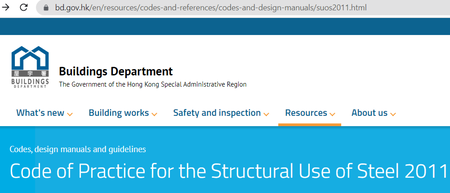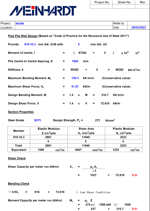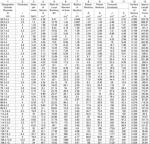Pile Pile Structural Checking

Description
The 'Code of Practice for Structural Use of Concrete 2013' is a design manual provided by the Buildings Department of the Hong Kong Government. It covers various aspects of structural design, including the design of pile foundations. Pile foundations are deep foundations that transfer loads from the superstructure to the soil or rock strata with higher bearing capacity. Here is a summary of the pile calculation process described in the code:
-
Soil investigation and pile type selection: Conduct a soil investigation to determine the soil profile, strata, and geotechnical properties. Based on the soil conditions and structural requirements, select the appropriate type of pile (e.g., precast concrete, cast-in-place, or steel).
-
Determine load carrying capacity: Calculate the axial load carrying capacity of the pile, considering both the end-bearing resistance (Qp) and the skin friction resistance (Qf) along the pile's length. The ultimate load carrying capacity (Qu) is the sum of these resistances:
Qu = Qp + Qf
-
Factor of safety: Apply an appropriate factor of safety to the ultimate load carrying capacity to determine the allowable axial load (Qall) for the pile:
Qall = Qu / FS
Where FS is the factor of safety.
-
Calculate applied loads: Determine the axial loads (dead, live, and other applicable loads) acting on the pile from the superstructure. Consider the combined effect of axial forces, bending moments, and shear forces on the pile.
-
Check load carrying capacity: Compare the applied axial load to the allowable axial load (Qall) to ensure that the pile can support the imposed loads without failure. If the applied load is greater than the allowable load, adjust the pile dimensions, type, or capacity accordingly.
-
Pile group analysis: If piles are used in groups, perform a pile group analysis to account for the combined effects of individual pile loads, pile spacing, and soil-structure interaction. Ensure that the group capacity meets the required load-carrying capacity.
-
Structural design: Design the pile reinforcement (if applicable) and connection details to resist the applied loads and moments. Follow the requirements of the applicable design codes and standards for reinforcement size, spacing, and detailing.
-
Lateral load analysis: If the pile is subjected to significant lateral loads, perform a lateral load analysis to determine the pile's lateral deflection, bending moment, and shear force. Ensure that the pile can resist the lateral loads without excessive deformation or failure.
By following these steps, engineers can accurately calculate the load-carrying capacity and structural requirements of pile foundations, ensuring that they safely support the imposed loads from the superstructure.
See https://www.bd.gov.hk/en/resources/codes-and-references/codes-and-design-manuals/suos2011.html
Calculation Preview
Full download access to any calculation is available to users with a paid or awarded subscription (XLC Pro).
Subscriptions are free to contributors to the site, alternatively they can be purchased.
Click here for information on subscriptions.




